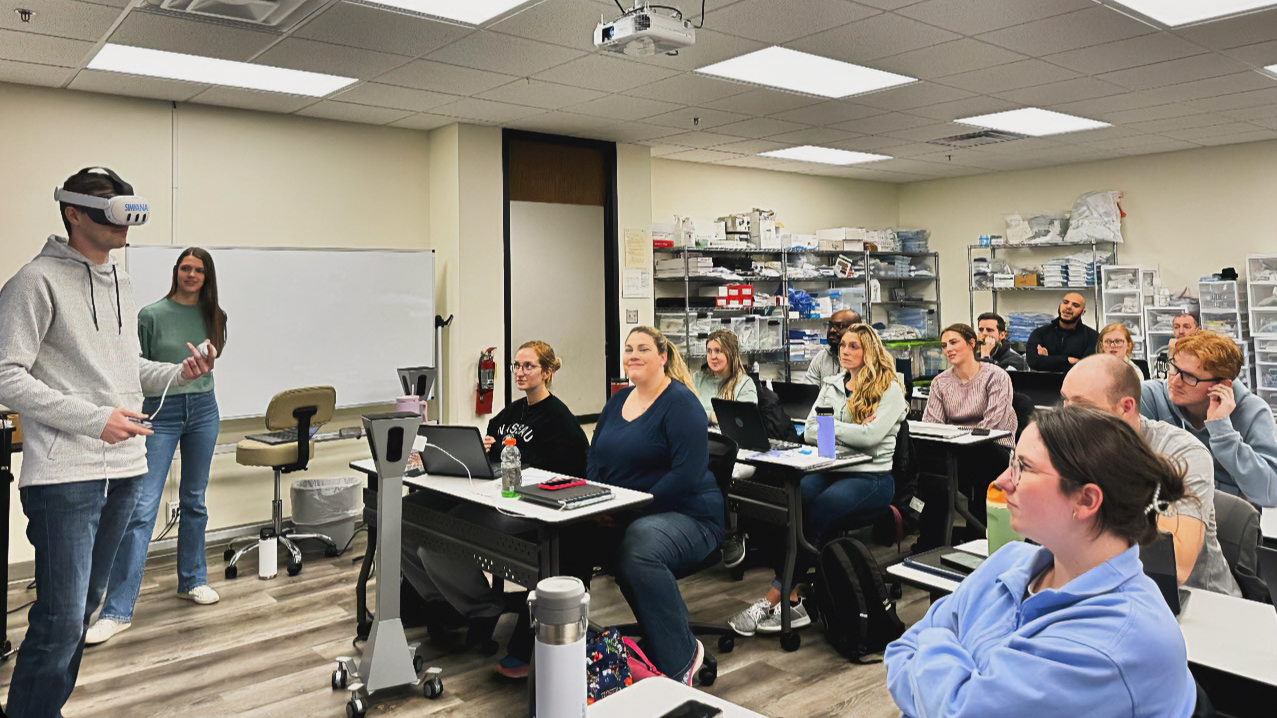Simulations
Whether you are in the sim lab or in your living room, SIMVANA's simulations unlocks access to a library of real-word scenarios that can be completed anytime and anywhere.
Start with basic Machine Checkout and Intubation simulations, and graduate to more complex cases where learners must identify and resolve issues in real time.
Build the knowledge and confidence needed in the real-world operating room by completing virtual simulations at your own pace.
Simulations to real-world skills
Simulations challenge skills, decision-making, and situational awareness beyond simple exercises. Each simulation presents high-level objectives that reflect the critical responsibilities of a CRNA, including:
- Patient Preparation: Ensure the patient is ready for anesthesia, covering all preoperative assessments.
- Airway Management: From intubation to the insertion of supraglottic airway devices, master the essentials of airway control.
- Vital Signs Monitoring: Practice keeping patient vitals within a narrow margin of their baseline, ensuring safety and stability.
- Crisis Management: Identify and resolve issues with anesthesia machinery and patient, ensuring uninterrupted patient care.

Faculty, get your time back!
Are you tired of resetting an sim lab after every student completes their simulation?
We’ve received feedback that Anesthesia Educators are spending 70+ hours setting up simulated operating rooms for their learners each semester.
Reduce the time needed to setup, monitor, and clean up, with SIMVANA's virtual reality simulations.
Increase simulation opportunities

Machine Checkout
The Machine Checkout Simulation contains over 2000 possible combinations of problems affecting the anesthesia machine and related equipment.
Identify and resolve the issues as quickly as possible to ensure your operating room is properly configured to administer a safe anesthetic.
Endotracheal Intubation
The Endotracheal Intubation Simulation provides an environment in which you can safely practice the sequence of induction of intravenous anesthesia and airway management using endotracheal intubation.
Your objective in this simulation is to induce anesthesia using the intravenous agents of your choice, ensure adequate neuromuscular relaxation, secure the airway with an endotracheal tube using video laryngoscopy, and maintain adequate anesthesia using the volatile agent of your choice.
Rapid Sequence Induction
The Endotracheal Intubation Simulation provides an environment in which you can safely practice the rapid sequence induction process and airway management using endotracheal intubation.
Your objective in this simulation is to induce anesthesia suitable in rapid sequence, secure the airway with an endotracheal tube using video laryngoscopy as quickly as possible, ensure maintenance of anesthesia with an inhalation anesthetic, and establish adequate mechanical ventilation.
Supraglottic Airway Placement
The SGA Placement Simulation provides an environment in which you can safely practice the sequence of intravenous induction and airway management using a supraglottic airway.
Your objective in this simulation is to induce anesthesia using the anesthetic agent of your choice, establish the airway using a supraglottic airway device, and maintain adequate anesthesia using the volatile agent of your choice.
Equipment Complications
During a routine morning break, you experience a random equipment issue in your room.
Your objective is to identify and solve the issue less than two minutes from the time it occurs.
Induction Complications
Practice intravenous induction of anesthesia for endotracheal intubation in the context of equipment malfunctions and hemodynamic complications.Your objective in this simulation is to intubate a patient with an endotracheal tube while successfully dealing with hemodynamic complications and/or the malfunction of one or more pieces of anesthesia equipment.
Supraglottic Airway Emergence
This simulation provides an environment in which you can safely practice emergence from anesthesia.
Your objective in this simulation is to safely bring the patient back to consciousness and get them ready to be transferred to PACU.
Endotracheal Tube Emergence
This simulation provides an environment in which you can safely practice emergence from anesthesia.
Your objective in this simulation is to safely bring the patient back to consciousness and get them ready to be transferred to PACU.
Laryngospasm
Your objective in this simulation is to identify and treat a patient experiencing laryngospasm as he returns to consciousness.Malignant Hyperthermia
This simulation provides an environment in which you can safely deal with a malignant hyperthermia case.
Your objective in this simulation is to watch the onset of malignant hyperthermia, resolve it, and get the patient ready to be transferred to PACU.
Airway Fire
This simulation provides an environment in which you can safely deal with an airway fire. Your objective in this simulation is to observe for signs of airway fire and take appropriate steps in the immediate treatment of an airway fire.Worst Break Ever
In the Worst Break Ever, you are providing a routine break for a colleague in which anything and everything that can happen likely will happen.
Your goal is to maintain satisfactory anesthesia, muscle relaxation, oxygenation, and ventilation while keeping hemodynamics within 10% of baseline.